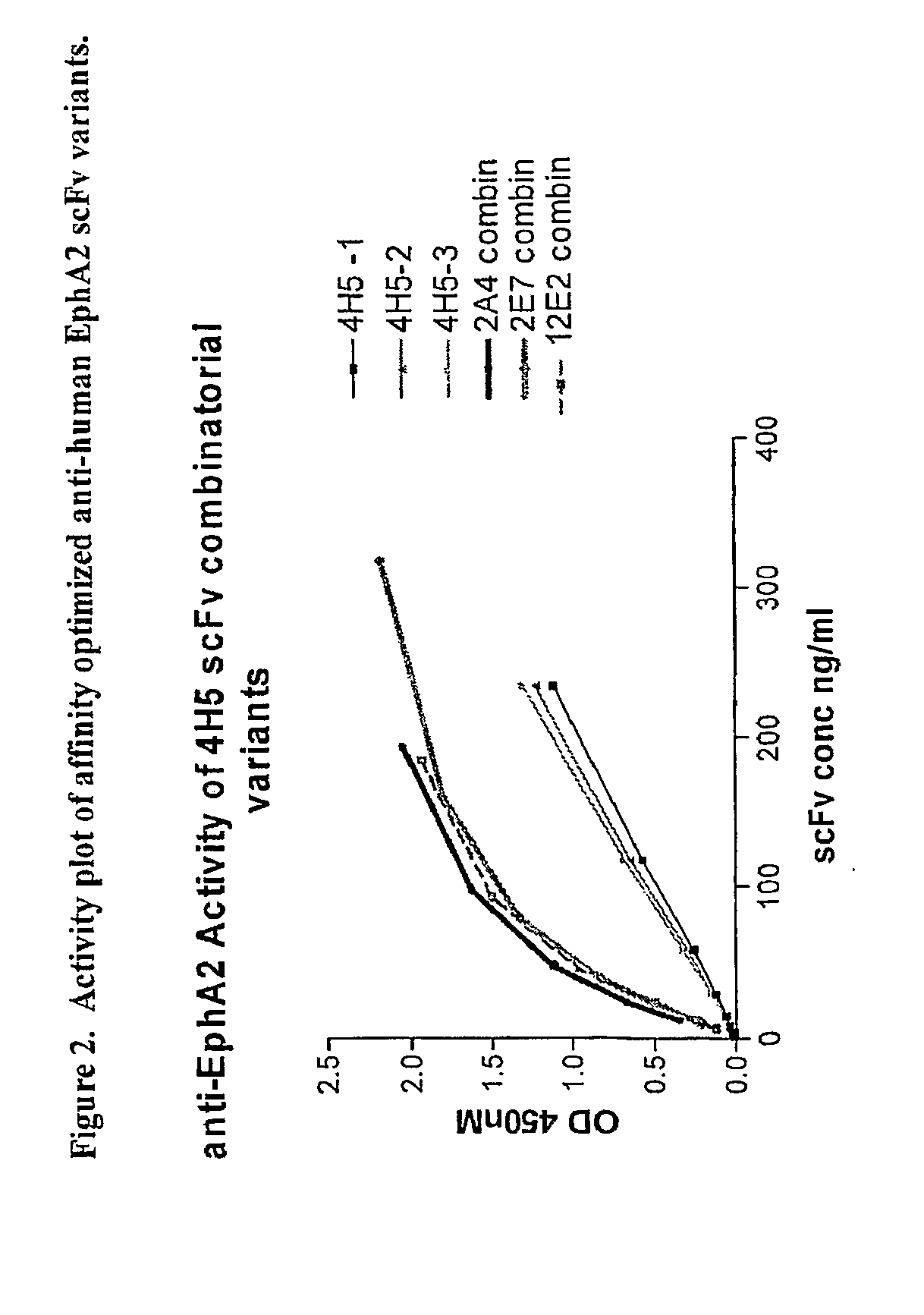Affinity optimized epha2 agonistic antibodies and methods of use thereof
a technology of agonistic antibodies and affinity optimization, which is applied in the field ofaffinity optimized epha2 agonistic antibodies and methods of use thereof, can solve the problems of increasing destruction, most life-threatening forms of cancer, and ineffective current treatment options, such as surgery, chemotherapy and radiation treatment, and can not be used in clinical trials
- Summary
- Abstract
- Description
- Claims
- Application Information
AI Technical Summary
Benefits of technology
Problems solved by technology
Method used
Image
Examples
Embodiment Construction
[0061]The present invention provides antibodies that specifically bind to EphA2. In particular, the invention provides the following antibodies that specifically bind to EphA2: 2A4, 2E7, and 12E2. The present invention also provides for antibodies comprising a variable heavy (“VH”) domain and / or a variable light (“VL”) domain having an amino acid sequence of the VH domain and / or VL domain, respectively, of 2A4 (Seq ID No: 2), 2E7 (Seq ID No: 18), or 12E2 (Seq ID No: 26). Such antibodies may further comprise any constant region known in the art, preferably any human constant region known in the art, including, but not limited to, human light chain kappa (K), human light chain lambda (λ), the constant region of IgG1, the constant region of IgG2, the constant region of IgG3 or the constant region of IgG4. In addition, the present invention provides for antibodies comprising one or more complementarity determining regions (“CDRs”) of 2A4, 2E7, or 12E2.
[0062]Decreased EphA2 activity sele...
PUM
| Property | Measurement | Unit |
|---|---|---|
| dissociation constant | aaaaa | aaaaa |
| dissociation constant | aaaaa | aaaaa |
| dissociation constant | aaaaa | aaaaa |
Abstract
Description
Claims
Application Information
 Login to View More
Login to View More - R&D
- Intellectual Property
- Life Sciences
- Materials
- Tech Scout
- Unparalleled Data Quality
- Higher Quality Content
- 60% Fewer Hallucinations
Browse by: Latest US Patents, China's latest patents, Technical Efficacy Thesaurus, Application Domain, Technology Topic, Popular Technical Reports.
© 2025 PatSnap. All rights reserved.Legal|Privacy policy|Modern Slavery Act Transparency Statement|Sitemap|About US| Contact US: help@patsnap.com



